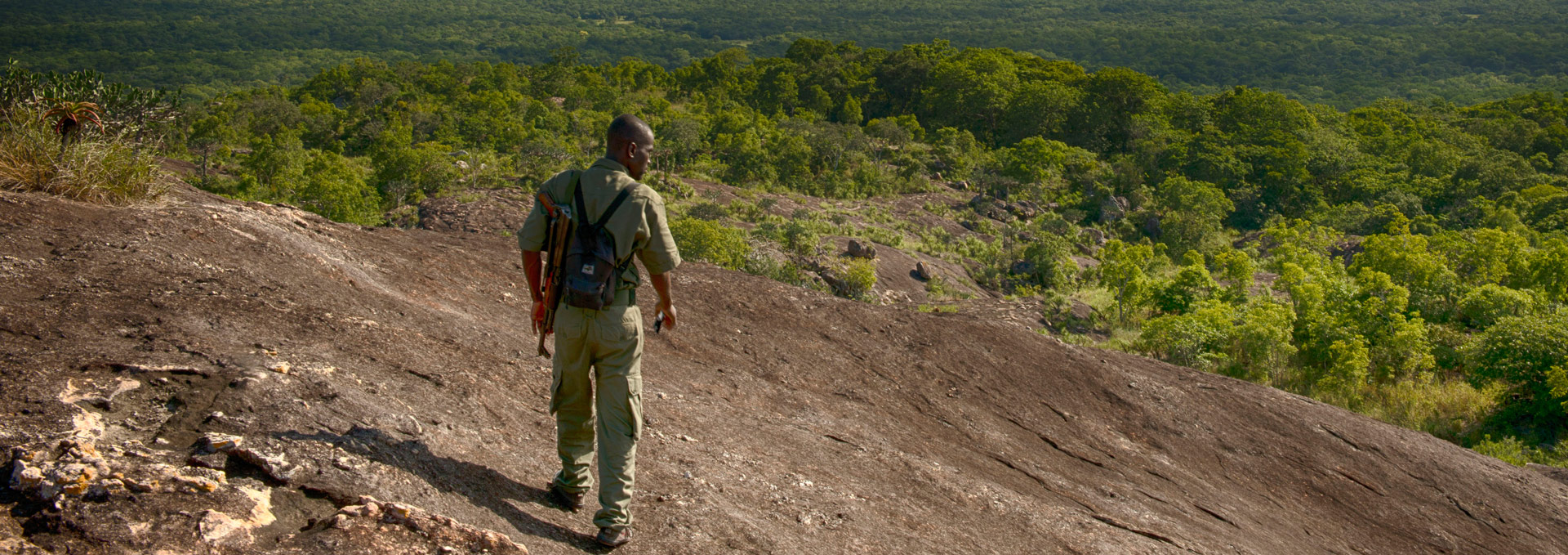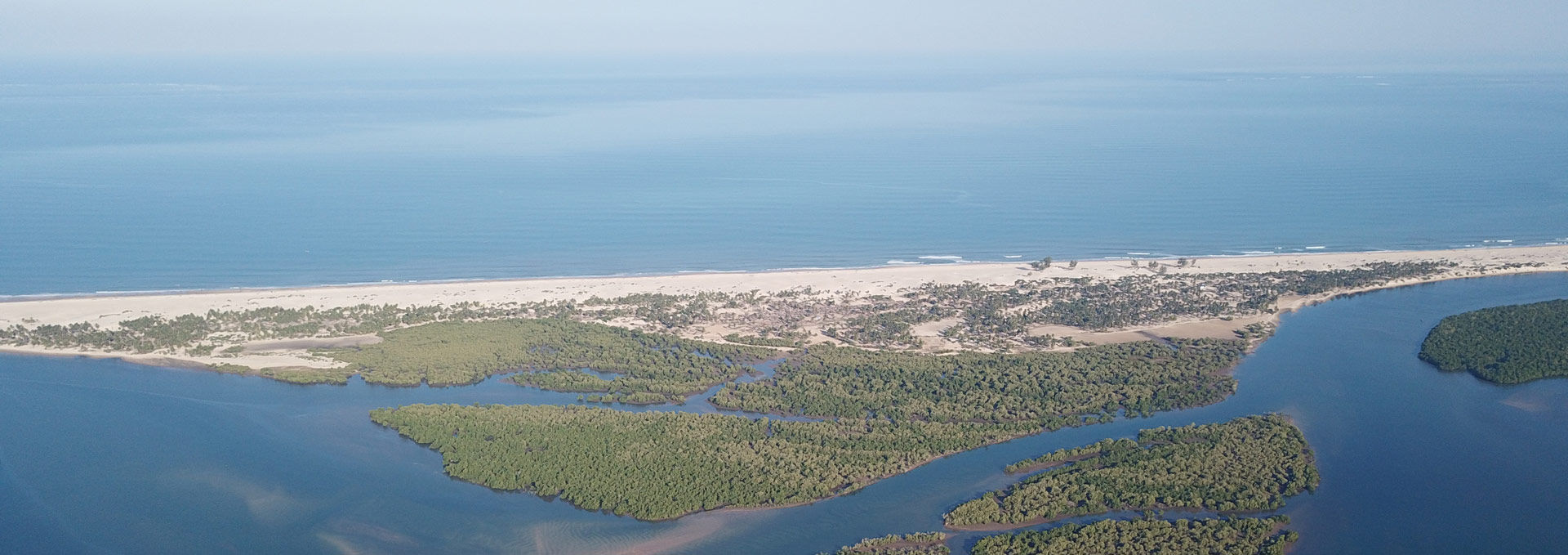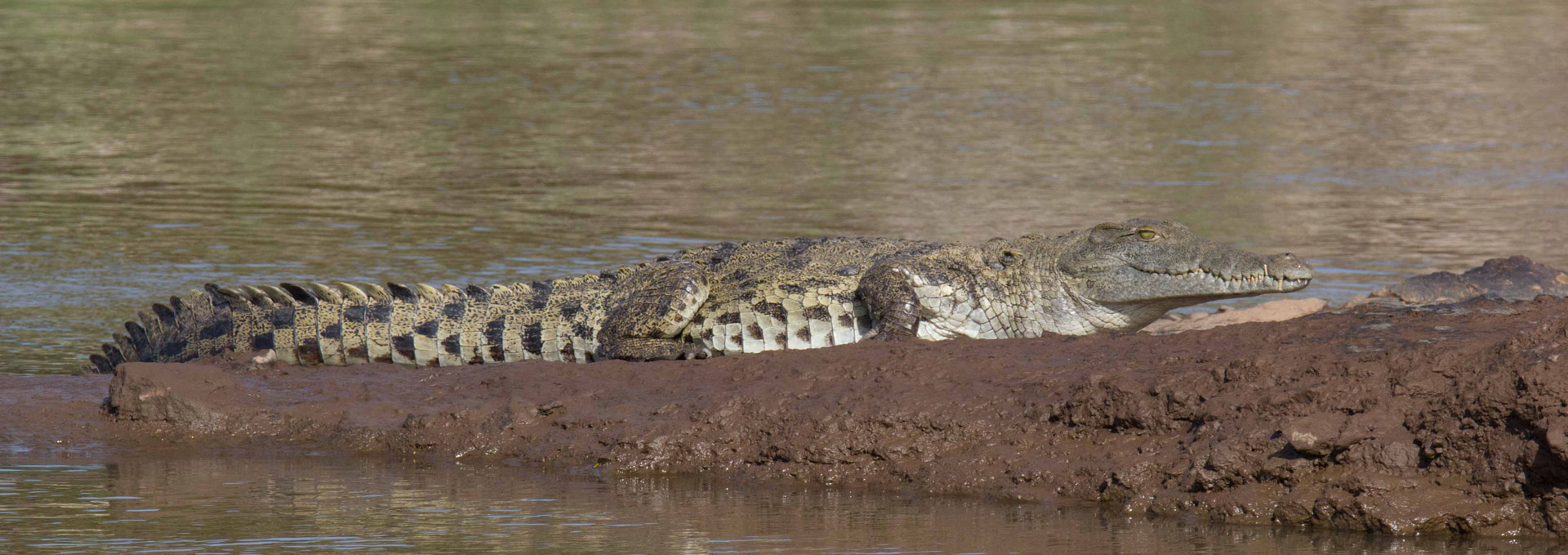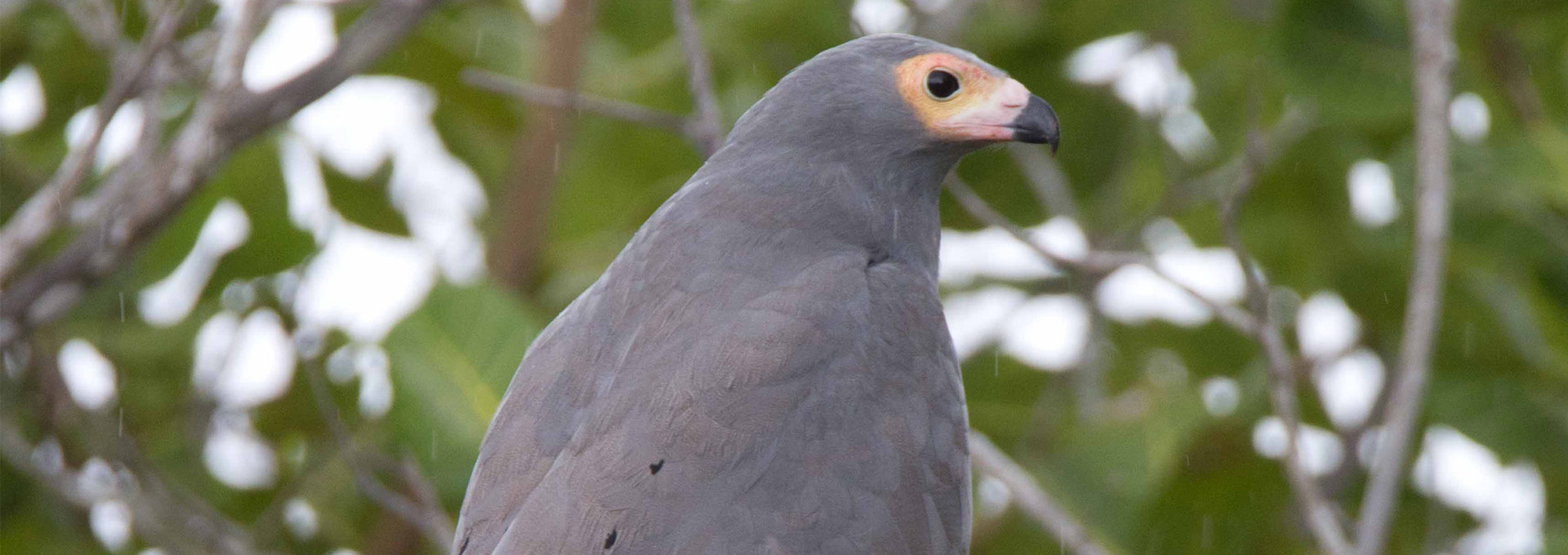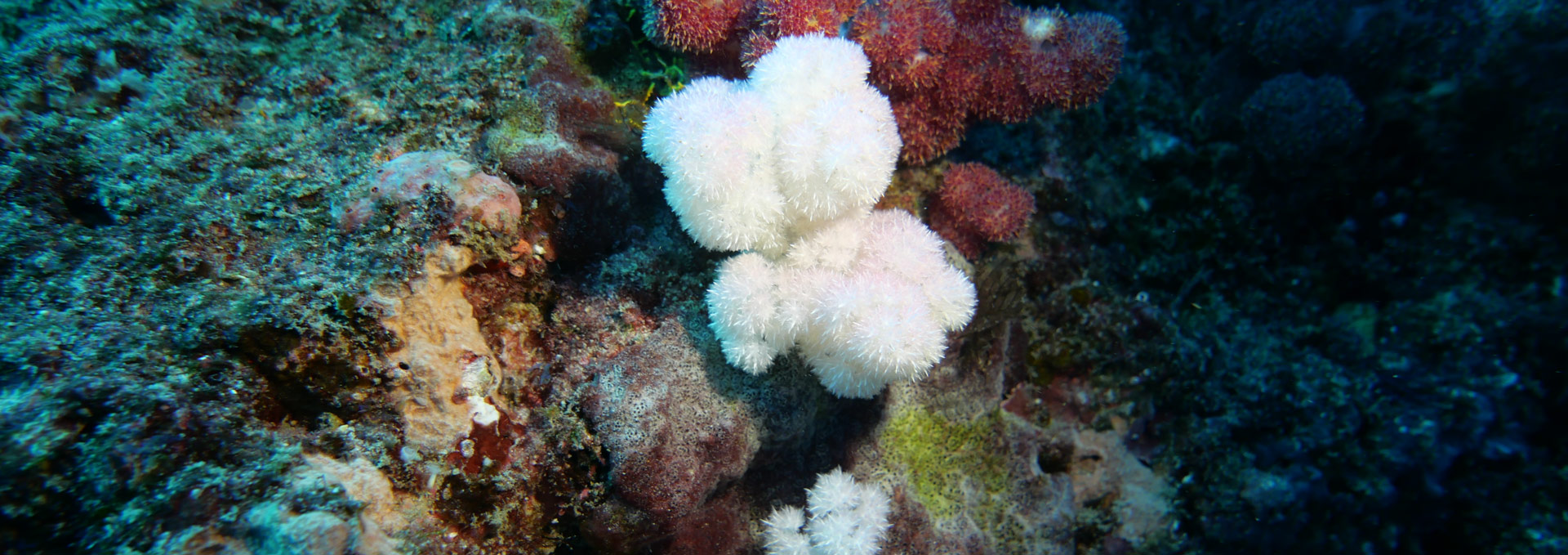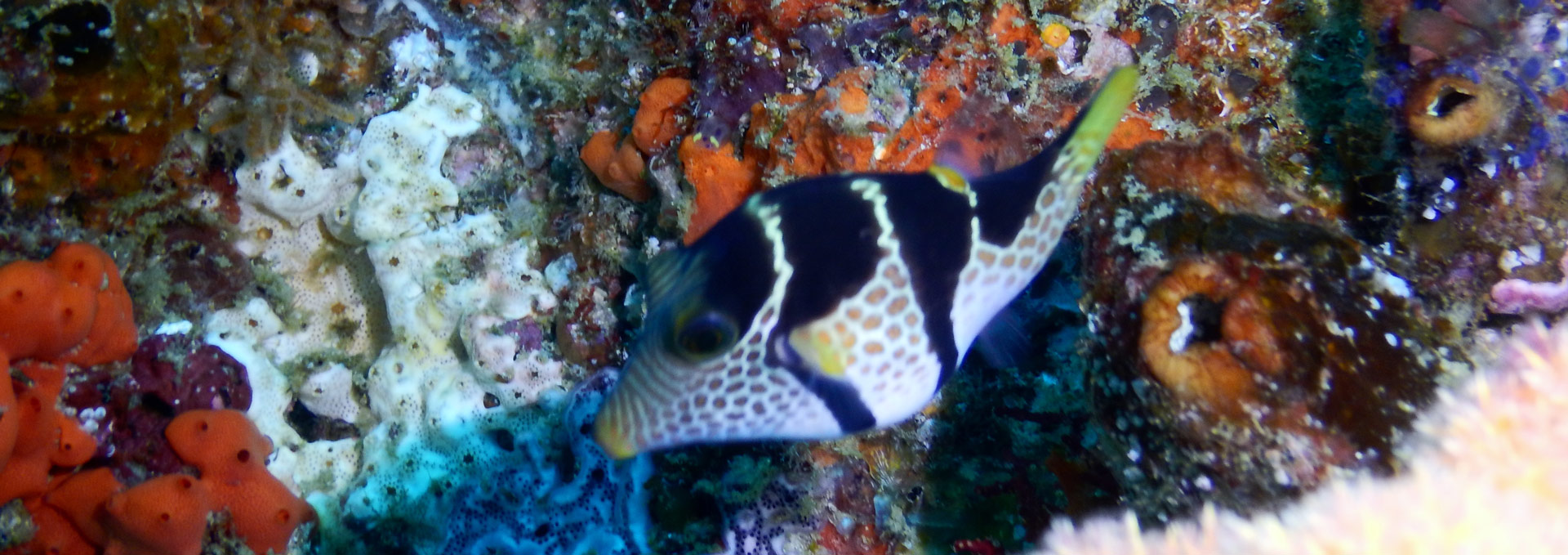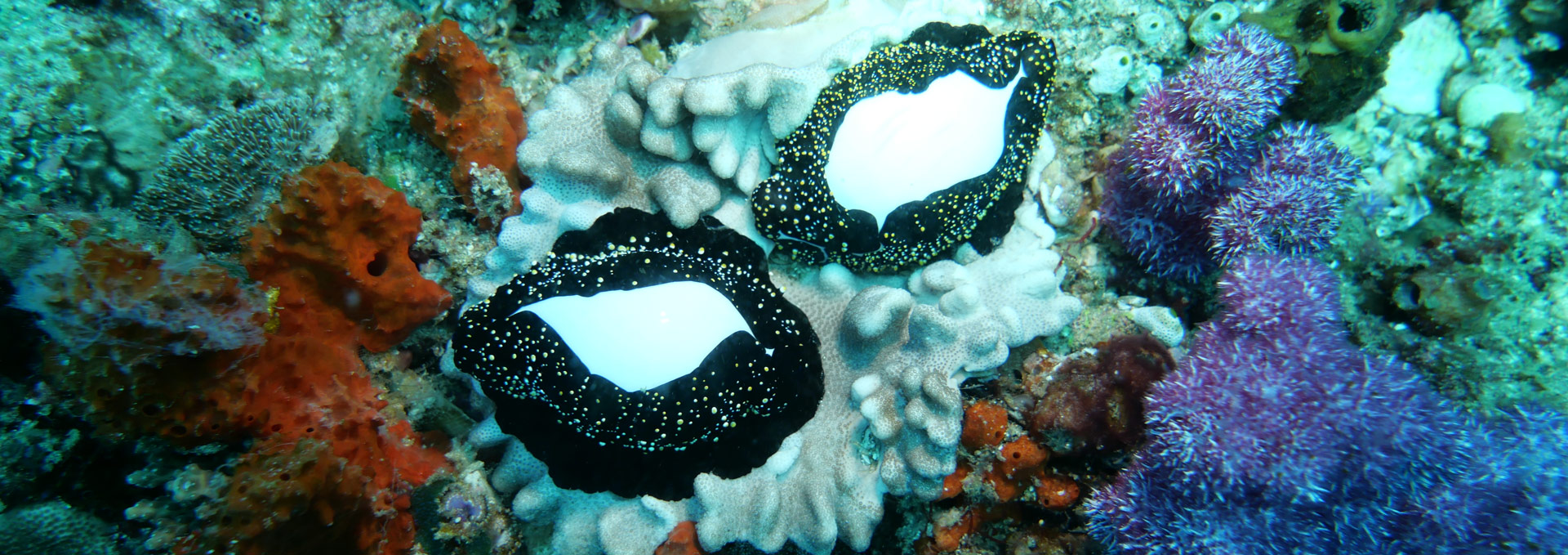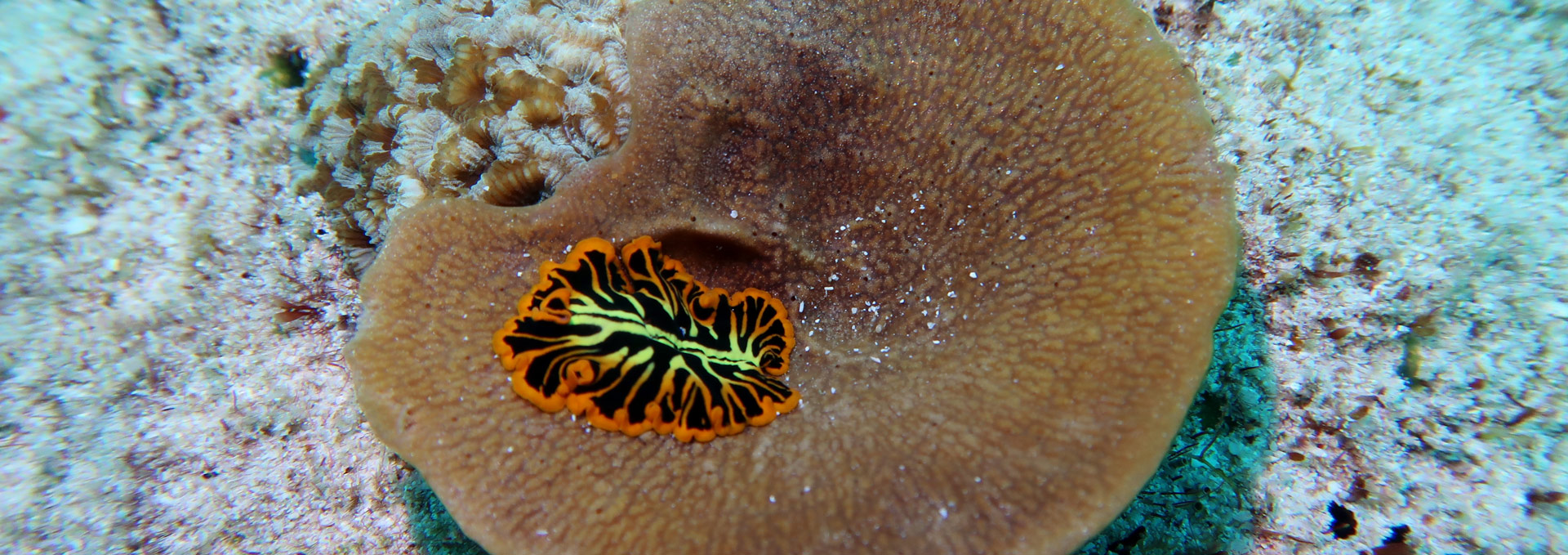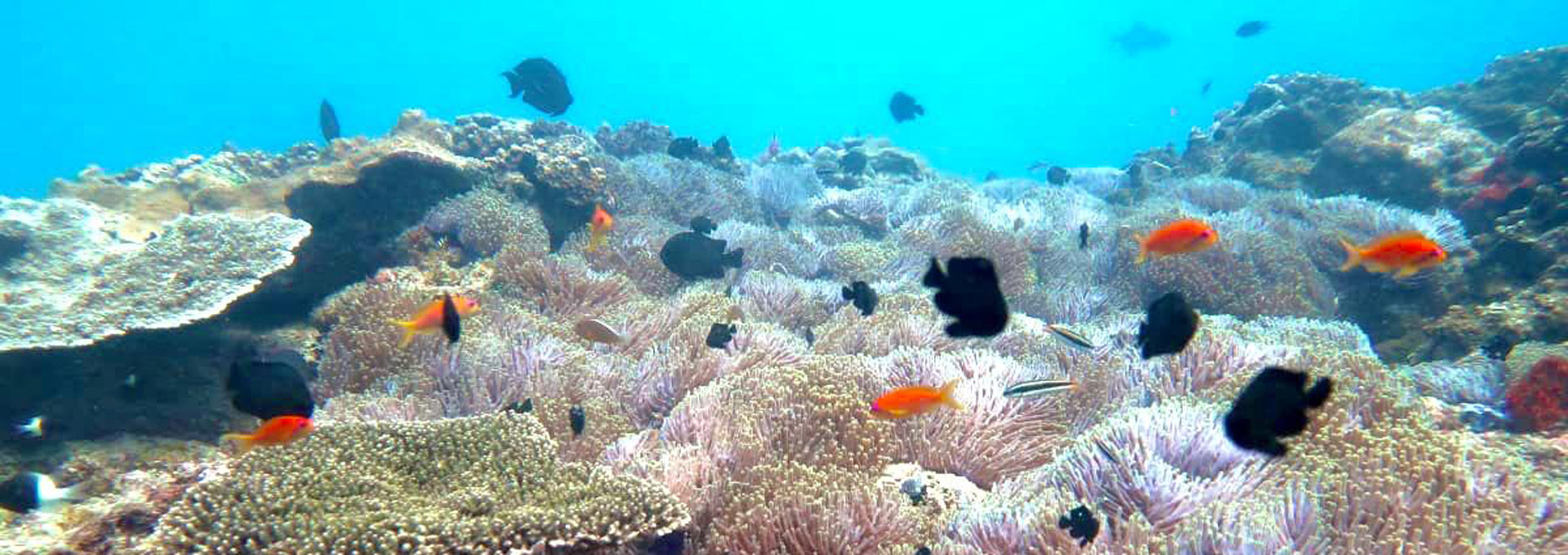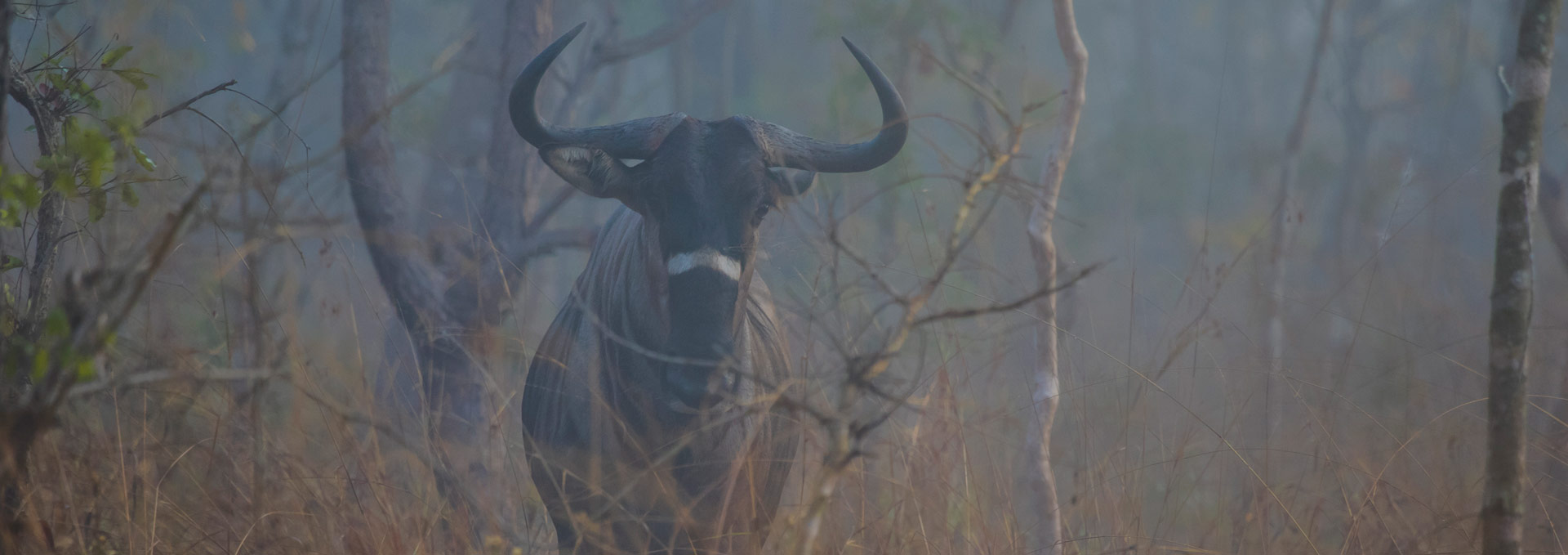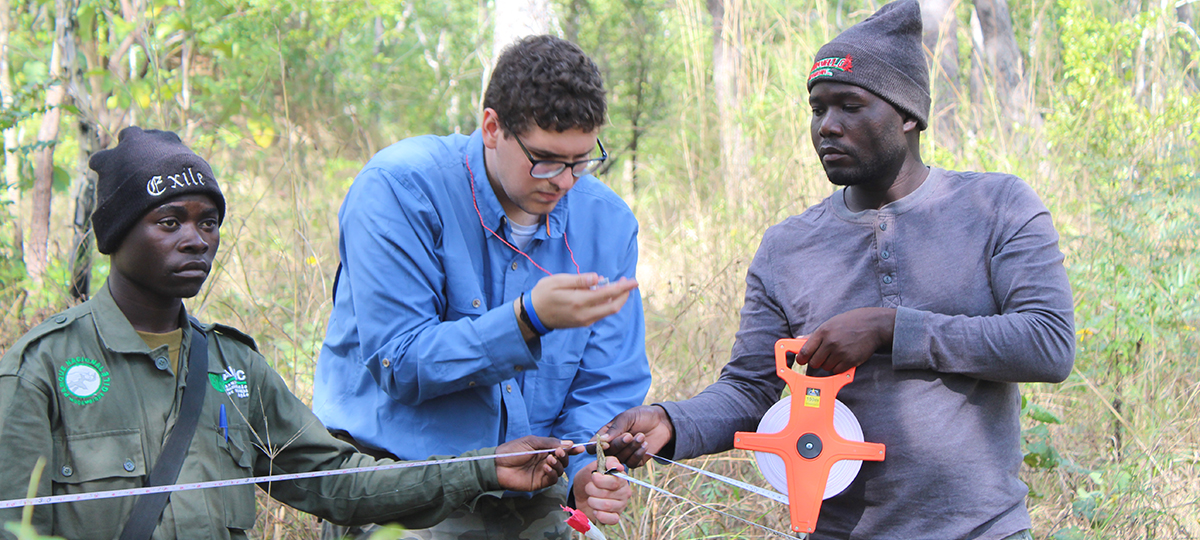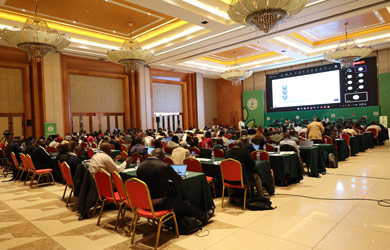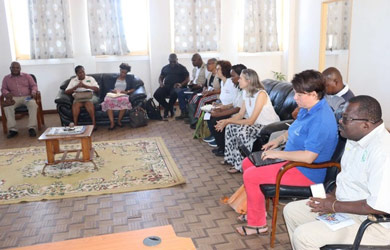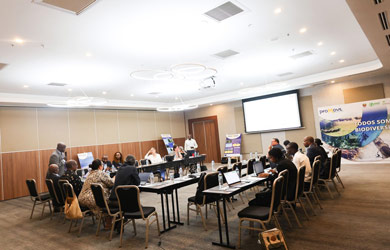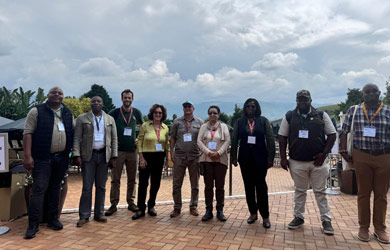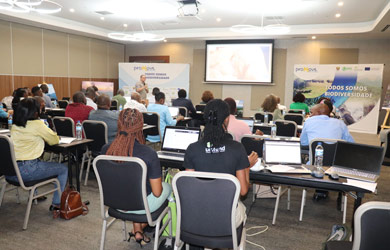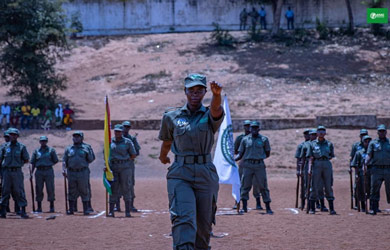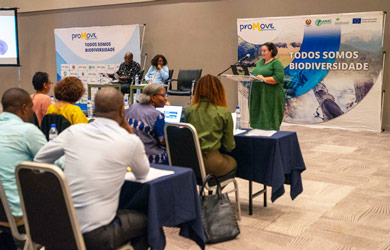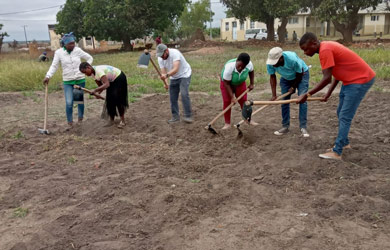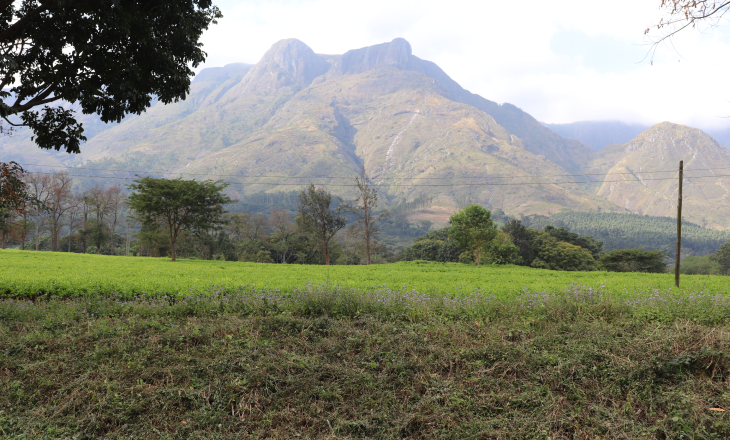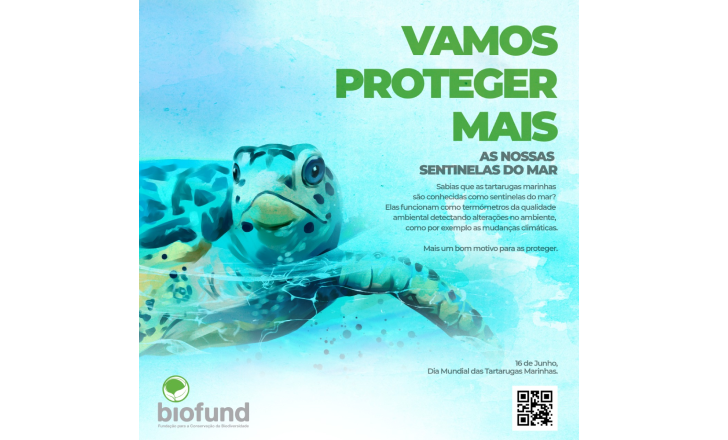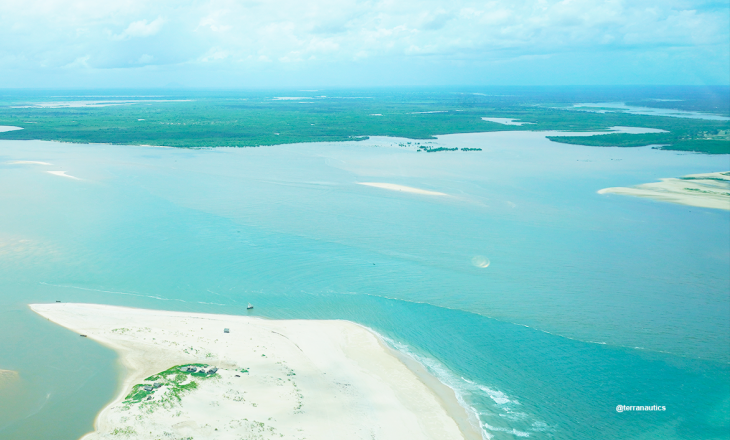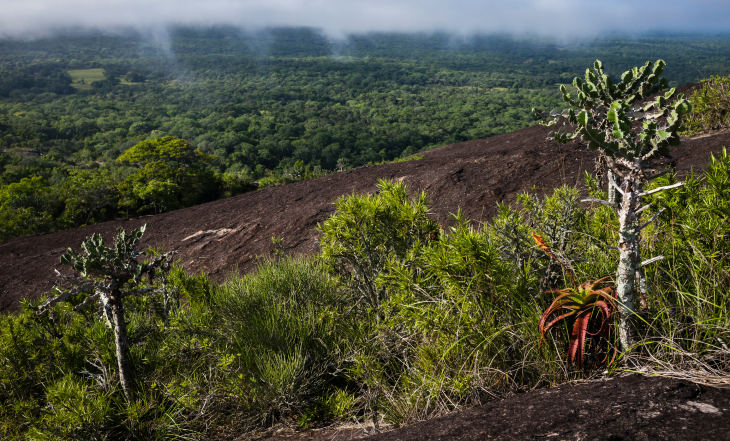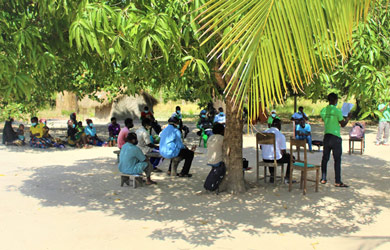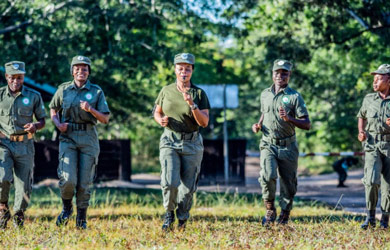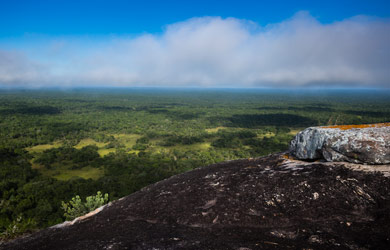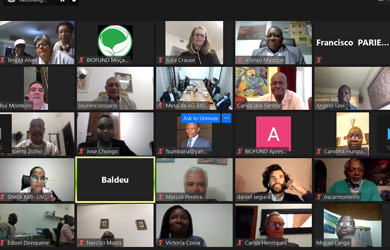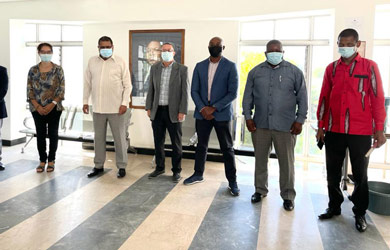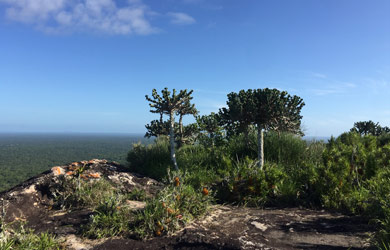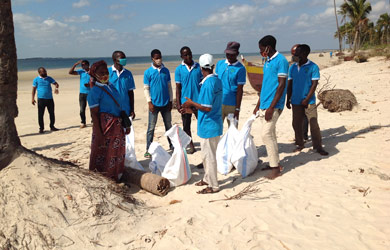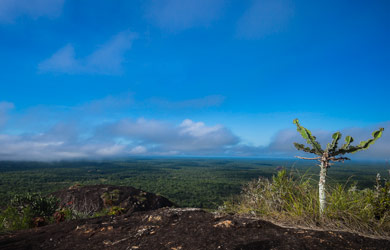
Updated at 28/10/2025
What is PROMOVE Biodiversity?
PROMOVE Biodiversity is part of an Integrated Rural Development Program “PROMOVE Global”, of the European Union, comprising of 6 (six) specific programs: PROMOVE Biodiversity, PROMOTE Agribiz, PROMOVE Nutrition, PROMOVE Energy, PROMOVE Commerce and PROMOVE Transport. All focus on the Provinces of Zambézia and Nampula.
The implementation details of this program were identified and formulated in 2016, based on a biodiversity study led by a team of researchers commissioned by the European Union. Therefore, the program reflects the results of interviews with public authorities and civil society stakeholders, validated in consultation workshops in the target provinces (Zambézia and Nampula) and at the national level.
The PROMOVE Biodiversidade program includes four components. First, provides institutional support at the national level, a component led by the National Agency for Conservation Areas (ANAC). The remaining three components, managed by BIOFUND, focus on biodiversity conservation, community development, including environmental education and applied research. The support is directly provided to three referred conservation areas in the provinces of Nampula and Zambézia: Environmental Protection Area of the Primeiras/First and Segundas/Second Islands (APAIPS), Gilé National Park (PNAG), and Mount Mabu.
The European Union signed a Financing Agreement with the Government of Mozambique through the National Authorizing Office (GON) in 2018, totalling €13 million. The specific agreement was signed with BIOFUND in December 2019 and was adjusted through subsequent addenda in 2020 and 2024, resulting in a budget increase from €10.2 million to €10.935 million and an extension from October 2025 to October 2026. The first addendum aimed to support the operational costs of conservation areas under public and private management during the emergency imposed by the COVID-19 pandemic. The second addendum, signed in 2024, accommodates the updated logical framework, an additional €250,000 to strengthen the livelihoods component, and an extension until 2026.
Objectives

The overall objective of the program is to protect biodiversity and contribute to improving livelihoods of rural communities through sustainable management of natural resources in the target areas of Mozambique.

Implement sustainable initiatives and strategies to improve the management and administration capacity of the project’s intervention areas.

Adopt sustainable practices livelihoods for local communities living inside and outside (buffer zone) conservation areas.

Encourage and disseminate applied research and studies linked to natural resource management in order to influence sustainable use and policies.
Geographical Scope
The project focuses on 3 target areas, in the provinces of Nampula and Zambézia:
Environmental Protection Area of the Primeiras/First and Segundas/Second Islands – APAIPS - Read more
The Environmental Protection Area of the First and Second Islands (APAIPS) is the first conservation area with the Environmental Protection Area (EPA/APA) category in Mozambique. It was established in 2012 by Ministerial Decree 42/2012 of December 12, 2012, and is a part of the national system of conservation areas. APAIPS is the second largest marine conservation area in Africa, with a surface area of approximately 1,040,926 ha (hectares).
The Archipelago of the Primeiras/First and Segundas/Ssecond Islands comprises two groups of islands, with five islands each, located parallel to the coast of Mozambique. The southern group of islands is in Zambézia province, and the northern group of islands is in Nampula. The islands form a nearly continuous archipelago between Pebane and Angoche, passing along the coastline of the Moma and Larde districts.
This Environmental Protection Area is connected to the Indian Ocean to the East. The western boundary of the Environmental Protection Area follows a 10 km line inland from the high-tide line, resulting in a land area of approximately 205,000 ha. The APAIPS includes estuarine areas, mangroves, intertidal areas, and tidal rivers from the Sangage to the Moniga River. Furthermore, it has been categorized as a Key Biodiversity Area (KBA). It boasts significant biodiversity, including a significant population of Icuria dunensis, a tree species endemic to Mozambique, listed as Endangered (EN) according to the IUCN Red List of Threatened Species. The area also has two coral reef complexes, seagrass beds, and green turtles.
BIOFUND has been providing ongoing, long-term support for the basic and minimum operational costs of this environmental protection area since 2019, using its own funds, from Conservation International/Global Conservation Fund (GCF) donation to the BIOFUND endowment. With support from the PROMOVE Biodiversidade program, the aim is to create the necessary management and administration conditions for the area while simultaneously encouraging the implementation of sustainable community economic activities.
As part of the program, a grant agreement was signed in the first semester of 2023 between ANAC, BIOFUND, and WWF (leader of the WWF-AENA-Kulima consortium) for the implementation of the Promoting Biodiversity in APAIPS project. Broadly, the project aims to protect biodiversity and contribute to improving the living conditions of rural communities in APAIPS through the sustainable management of natural resources in the provinces of Nampula and Zambézia./p>
Gilé National Park – PNAG – Read more
This park covers an area of 453,200 ha, of which 286,100 ha are the core protection area and there is a Buffer Zone (ZT) of 167,100 ha. It covers the districts of Gilé and Pebane. Initially established as a National Reserve on April 23, 1932, it was elevated to the category of National Park in 2020. The area is managed by ANAC through an Administration structure established in the Park in partnership with the International Foundation for Wildlife Management (FFS-IGF), which has invested in and provided technical-financial support through an agreement signed in September 2018 with ANAC. The FFS-IGF signed the implementation of PROMOVE Biodiversidade agreement with BIOFUND in October 2020. This Park also benefited from BIOFUND’s support from 2017 to 2021 through the APEM/Abelha project co-financed by the French Development Agency (AFD) and the BIOFUND endowment, and since 2022 BIOFUND continues funding in perpetuity through the PostAbelha project.
PNAG is particularly important for the conservation of Miombo woodland, alternating with the vast savanna areas. Intact riparian vegetation occurs along the riverbanks. This area serves as a green lung of Zambézia province.
PROMOVE Biodiversidade program aims to support and complement the management and administration efforts of this biodiversity conservation area, as well as strengthen the capacity of local communities. To this end, two agreements were signed: the first with the International Wildlife Management Foundation (FFS-IGF) in October 2020, extende until October 2026, to support the management and implement the conservation component. The other agreement was signed with the Zambézia Province Development Network (RADEZA) from March 2021 to July 2025, focusing on implementing the community development component in the PNAG buffer zone.
Mount Mabu–MABU – Read more
Mabu Mount is a 1,700 m high granite massif located in Lugela district, north of the Lugela River, in Zambézia province. It is an area rich in biodiversity but without a legal conservation status as yet. Its richness became known through research and dissemination by Julian Bayliss using Google Earth, which is why it is sometimes called the Google Forest. The first visit to Mabu Mount was in December 2005 by Julian Bayliss, Camila De Sousa, Eric Hermann, and Hassam Patel, and since then it has been the site of a series of international and national scientific expeditions that have recorded and published information on several endemic species (some new to science). Regarding vegetation, all studies on Mount Mabu have shown that the humid forest area is very extensive for the region (between 5,500 and 7,900 ha), with the vast majority found between 1,000 and 1,400 m above the sea level. This type of mid-altitude forest is increasingly rare in the southern African region, as many of these areas have been deforested in the last 100 years for wood extraction and shifting cultivation. It is one of the Key Biodiversity Areas (KBAs), activated by the presence of 17 species across the taxonomic groups of plants, butterflies, amphibians, reptiles, and birds. Of these, nine (9) species Atheris mabuensis, Dipsadoboa montisilva, Lygodactylus mabu, Nadzikambia baylissi, Rhampholeon maspictus, Iolaus (Epamera) malaikae, Helixanthera schizocalyx, Pavetta gurueensis, and Sclerochiton hirsutus are endemic to Mabu. The PROMOVE Biodiversity program aims to contribute to Mabu's becoming a formal conservation area, with the participation of local communities in its sustainable management and livelihood improvement. To achieve this goal, an agreement was signed in March 2021 between BIOFUND ANAC and WWF (leader of the WWF-ReGeCom-RADEZA consortium), establishing the basis for the proposed initiatives.
The program is managed and monitored by BIOFUND and the implementing partners were either previously identified/agreed (FFS/IGF in the case of PNAG) or selected through public tenders (as is the case of the consortia led by WWF in APAIPS and Mabu Mount), who have grants with BIOFUND.
Program Implementation
PROMOVE Biodiversidade aims to strengthen and consolidate the effective management of Gilé National Park (PNAG). The grant to support PNAG through FFS/IGF began in October 2020 focusing, until February 2025, on the biodiversity conservation component by strengthening management and administration capacity and investing in effective and efficient law enforcement within the park and the Buffer Zone. Besides, the support to law enforcement including vehicles, road construction and maintenance, establishment of potable water supply system for Musseia, installation of the radiocommunication and technology enhance the efficiency in controlling illegal activities and ecological monitoring. An agreement was also signed with the Zambézia Network of Organizations for Environment and Sustainable Community Development (RADEZA) to support community development activities. This grant ran from March 2021 to July 2025. The current agreement with the FFS/IGF extended until October 2026, incorporates the community development component in the Park’s Buffer Zone.
In the Environmental Protection Area of the Primeiras/First and Segundas/Second Islands (APAIPS), the focus is on creating management and administrative conditions, strengthening the management, administration, and oversight team, and supporting community development. The WWF-AENA-Kulima consortium, led by WWF, signed an implementation agreement for the Promoting Biodiversity in APAIPS project in June 2023, following the dissolution of the previous CTV-led consortium involving Conserve Global and Terra Nautics.
Considering that conservation and sustainable use of natural resources require long-term interventions, the PROMOVE Biodiversidade program continued initiatives financed by BAF that ended in 2023 and develops synergies with the MozNorte, a project financed by the World Bank under BIOFUND management.
The establishment of the APAIPS office, the training of 47 law enforcement officers including 11 community scouts and the acquisition of a vessel are important results despite the urgency of identifying a co-manager for long-term technical-financial support to reinforce the capacity and autonomy of APAIPS’s Administration.
For Mount Mabu, the biodiversity conservation and community development have as their main expected outcome, the change in status of this key biodiversity area to a community conservation area and the strengthening of community management capacity. There is significant progress in this area with the creation of the CONSERVAMABU Association to lead the management of the area. The experience of implementing governance, conservation, and sustainable livelihood development models will support the compilation of lessons learned to inform the replication and establishment of other conservation areas with the direct involvement of local communities. BIOFUND has signed an implementation agreement with the Consortium WWF-ReGeCom-RADEZA, in April 2021, and its duration extended from February 2025 to May 2026.
Mid-Term Evaluation of PROMOVE Biodiversity Program
The mid-term evaluation of PROMOVE Biodiversidade following the results oriented monitoring (ROM), analysed the program’s relevance, coherence, effectiveness, efficiency, sustainability, added value, and impact on biodiversity conservation in Mozambique. The objective was to generate useful lessons and recommendations for the final phase of the intervention and for future initiatives, considering the pioneering nature of this program in the European Union’s support for biodiversity conservation in the country.
The Delegation of the European Union (DUE) in Mozambique commissioned this mid-term evaluation, which took place between October 2024 and January 2025. The technical supervision of the process was carried out by a reference group composed of members of DUE, GON, ANAC and BIOFUND.
The evaluation adopted a collaborative methodology with program coordinators at ANAC and BIOFUND as well as the reference group, as previously mentioned. The process was guided by the Theory of Change. Data collection and analysis applied a mixed methodological approach, combining quantitative methods (i.e., progress indicators to measure effectiveness) with qualitative methods.
The main results, which also reinforced previous findings from joint monitoring (GON, EU, and BIOFUND) and results-oriented monitoring (ROM), highlighted progress in strengthening the management capacity of PNAG and APAIPS, as well as in the process of establishing the Mabu community conservation area. However, they highlighted the urgent need to implement a harmonized, strategic, sustainable, and inclusive community development approach with tangible benefits, on one hand. On the one hand, they emphasized the need to reduce proliferation and fragmentation of value chains and increase scale, ensuring tangible benefits, in order to stimulate the adoption of sustainable practices in natural resource use and agricultural production.
Adoption of a strategic approach for community development
Co-creation of a harmonized, strategic, sustainable and inclusive community development approach in conservation areas. The event involved around one hundred participants including representatives of central, provincial and district government institutions, CGRN, CCP, CSOs, co-managers and the private sector.
A strategic, sustainable and inclusive approach to community development within and outside conservation areas should include the following elements:
- effective community ownership and participation must be based on:
- strong and capable community institutions to lead sustainable natural resources management while ensuring the engagement of women and young people.
- access to information, formal, informal and vocational education, including awareness on habits and customs that affect reproductive and nutritional health.
- Livelihoods selected through participatory means, technically and financially viable, and whose scale of investment at the individual and community level is adequate to generate tangible benefits that guide biodiversity conservation. Furthermore, there is a need to add value to these resources through local processing and marketing of products, activities that create more local businesses and jobs, especially for young people.
- The sustainability of these livelihoods requires
- the development of financial literacy for good income management, savings and reinvestment in value chains.
- establishment of partnerships with the private sector to add value to products and facilitate market access.
- coordination with local government institutions that through investments in road access, for example, can enable access to the market.
- coordination with the central government , which, through effective sharing of tax revenues resulting from the commercial exploitation and use of natural resources and other incentives, it can ensure the full functioning of community institutions.
- strengthening the role of committees, community agents, monitors and facilitators who lead and ensure community awareness of the sustainable use of resources, monitor use, forming an important link with law enforcement.
It was recommended that a multisectoral working group be created to continue the co-creation and design of a guide for community development interventions in conservation areas,
Feasibility analysis of the value chains implemented in the three beneficiary areas
In line with the recommendations mentioned above, a feasibility study was carried out for the value chains implemented in the buffer zone of PNAG, in APAIPS and Mabu Mount, with the aim of verifying the net benefits generated, identifying viable, inclusive and sustainable value chains, measuring the beneficiaries’ reinvestment capacity and proposing guidelines for future projects of community development and strengthening livelihoods.
Key documents
Research in beneficiary areas
The PROMOVE Biodiversity program also includes an Applied Research and Participatory Studies component that cuts across the three beneficiary areas. Its results are intended to inform decision-making on natural resource management options and practices as well as improve the livelihoods of communities living in and around the target conservation areas. BIOFUND coordinates and supervises the research. Nevertheless, the studied topics are defined in close collaboration with the Program’s implementing partners and Conservation Area Administrators, and in compliance with ANAC’s research guidelines. Research institutions for PNAG and Mabu Mount were selected through public tenders, while direct contracting was chosen for APAIPS. This decision stemmed from the need to continue with data collection, which had been initiated previously with BAF support, thus producing a time series, in addition to fostering the involvement of research institutions based in the North and with research experience in APAIPS.
At the Gilé National Park, there are 3 ongoing research projects conducted:
- Eduardo Mondlane University (UEM) – Study of the effect of fires on the Miombo ecosystem.
- Catholic University of Mozambique (UCM) – Study of the relationship between population growth projections in the Buffer Zone and the use of natural resources and,
- Lúrio University (UniLúrio) – Study on the conservation status and impact of the reintroduction of large mammals on the ecological restoration of PNAG.
For Mabu Mount, the National Irrigation Institute and the Faculty of Agronomy and Forestry Engineering of UEM (INIR-FAEF) carried out the study on the hydrological potential of Monte Mabu.
At the Environmental Protection Area of Primeiras/First and Segunda/Second Islands
The research themes were identified in coordination with WWF and APAIPS Administrationment, considering the recommendations of the APAIPS Management Council (CGAPAIPS), which met in December 2023, on the Island of Mozambique. The CGAPAIPS recommendations included the following three themes:
- Study of the dynamics of fishing resources in priority fishing areas to determine the closing season and estimate sustainable effort;
- Monitoring of coral reefs and mangroves, continuing the surveys previously financed by the BAF (Blue Action Fund) under the “Conservar APAIPS “project; and,
- Analysis of the impact of mining on marine and coastal resources.
The Oceanographic Institute of Mozambique (InOM) and UniLúrio will research the fisheries dynamics and, the health of coral reefs, seagrass beds, and mangroves, respectively.
The topic related to the impact of mining will be addressed as part of the mapping priority areas for implementing biodiversity offsets to restore the residual environmental impacts.
The results achieved from research at PNAG and Mabu Mount are being disseminated through the sharing of progress with the Administration and stakeholders in the beneficiary conservation areas, in the National Steering Committee (CNS) of PROMOVE Biodiversity and participation of partners in scientific in national and international events with oral presentations and posters.
Expected Results
PNAG
Strengthen and support effective park management and promote community development activities.
APAIPS
Create effective management and administration conditions through the identification of a co-manager for long-term support.
MABU
Formalize its conservation status and promote community-based natural resource management.
National Supervisory Committee (CNS) of PROMOVE Biodiversity
The CNS was established in 2021 to provide strategic guidance, ensuring alignment with national policies and international commitments. It advises and monitors implementers and beneficiaries ensuring the achievement of the desired program results. The committee is chaired by the Director of the National Authorizing Office (GON) and it includes the following members:
Members of the National Oversight Committee
- Mário Ngwenya
Director of the National Planning Oversight Office (GON), President of the CNS
- Pejul Calenga
General Director of the National Administration of Conservation Areas (ANAC)
- Cornélio Miguel
Coordinator of the PROMOVE Biodiversity Program in the National Administration of Conservation Areas
- Ricardina Matusse
Administrator of the Environmental Protection Area of the Primeiras/First and Segundas/Second Islands (APAIPS)
- João Juvêncio
Administrator of Gileé National Park (PNAG)
- José Agnaldo
Director of District Services for Economic Activities (SDAE- Lugela)
- José Luís
Director of the Provincial Environmental Service-Nampula
- Hermenegildo Calide
Director of the Provincial Environmental Service – Zambézia
- Luís Bernardo Honwana
Executive Director of BIOFUND
- Aude Guignard
European Union Environment and Climate Change Officer, EUD
- Shaimin Vieira
Climate Change and Resilience Officer, EUD
- António Serra
Project Coordinator, for Support for Biodiversity Conservation and Community Development of Monte Mabu, leader of the WWF-ReGeCom-RADEZA consortium
- Delson Vutane
Project Manager, Promoting Biodiversity at APAIPS, leader of the WWF-AENA-Kulima consortium
Announcements and Tenders
No announcements
News
Relevant Documents
- Relatório do evento de lançamento do Projecto PROMOVE Biodiversidade
- 1ª Edição do Boletim informativo do Projecto PROMOVE Biodiversidade
- 2ª Edição do Boletim informativo do Projecto PROMOVE Biodiversidade
- 3ª Edição do Boletim informativo do Projecto PROMOVE Biodiversidade
- 4ª Edição do Boletim informativo do Projecto PROMOVE Biodiversidade
- 5ª Edição do Boletim informativo do Projecto PROMOVE Biodiversidade
- 6ª Edição do Boletim informativo do Projecto PROMOVE Biodiversidade
- 7ª Edição do Boletim informativo do Projecto PROMOVE Biodiversidade
Partners
Implementador

Parceiro

Doador

Implementation Partners

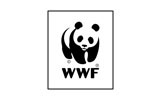

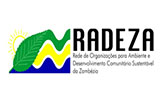
Promove Biodiversidade
Mount Mabú: A Forest of Butterflies
Mount Mabu Expedition

